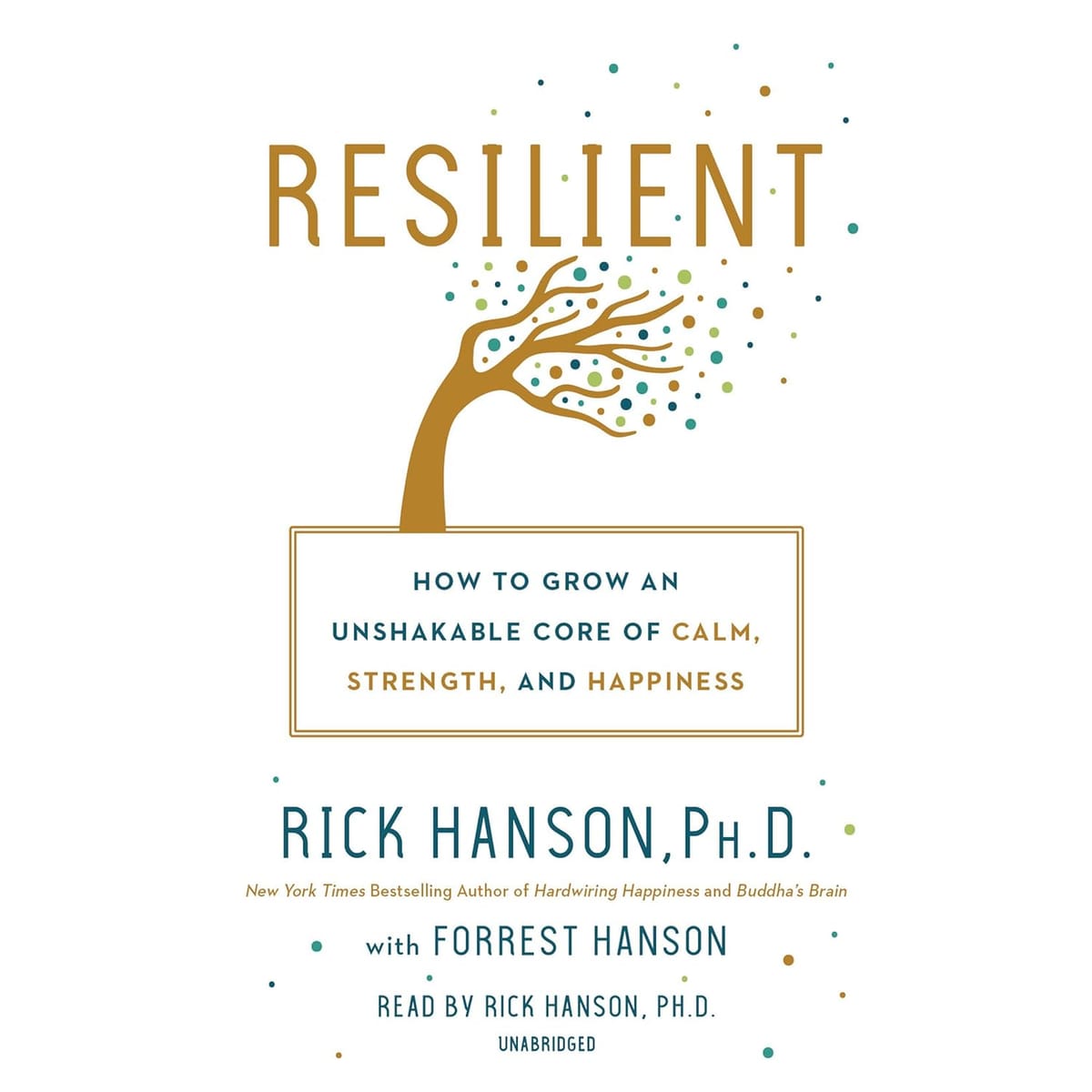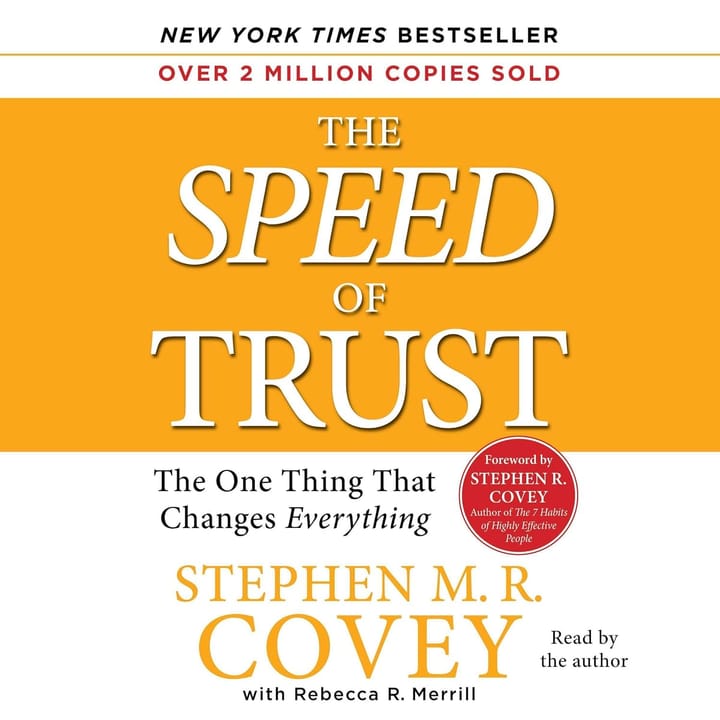Book Summary: Resilient
Learn how to cultivate inner peace, strength, and happiness in Rick Hanson's book Resilient. Discover tools for growth and resilience.

Essential Insights
- Developing resilience involves cultivating a mindset of calm, strength, and happiness.
- Rick Hanson offers practical tools and techniques to help individuals build a resilient core.
- Resilience is a skill that can be learned and strengthened over time through consistent practice.
Introduction to Resilient: How to Grow an Unshakable Core of Calm, Strength, and Happiness
Resilient: How to Grow an Unshakable Core of Calm, Strength, and Happiness by Rick Hanson is a compelling guide that delves into the depths of building resilience in the face of life’s challenges. Rick Hanson, a renowned psychologist and New York Times bestselling author, brings a wealth of expertise and practical wisdom to this book. Through a blend of neuroscience, psychology, and mindfulness, Hanson offers readers a roadmap to cultivate inner strength, emotional balance, and lasting happiness.
This book is invaluable to anyone seeking to enhance their leadership skills and personal development journey. In a world where uncertainty and adversity are inevitable, the ability to cultivate resilience is key to navigating life’s ups and downs with grace and courage. Resilient not only equips readers with practical strategies to build an unshakable core of calm and strength but also emphasizes the importance of fostering joy and contentment in the midst of life’s challenges. Whether you are a seasoned leader or an individual looking to enhance your personal growth, Resilient offers a transformative approach to building resilience and inner well-being.
Summary of Resilient
Resilient: How to Grow an Unshakable Core of Calm, Strength, and Happiness by Rick Hanson explores the essential qualities that contribute to personal resilience. The book emphasizes the importance of cultivating inner resources such as emotional regulation, mental clarity, and a sense of purpose. Through a combination of practical strategies and psychological research, Hanson guides readers toward enhancing their capacity to face challenges with confidence and equanimity. It encourages a shift in mindset, focusing on building a strong internal foundation that can withstand external pressures and stressors. One of the unique contributions of this book is its emphasis on the interplay between neuroscience and personal growth.
Hanson breaks down the science behind resilience, making complex concepts accessible to a broad audience. He presents techniques that anyone can incorporate into their daily life, making it easier for readers to put the ideas into practice. In addition, the book's focus on nurturing positive emotions and experiences offers a refreshing counterpoint to the often problem-focused narratives prevalent in self-help literature. This blend of scientific understanding and practical application sets Resilient apart as a valuable resource for those seeking to improve their mental and emotional well-being.
Notable points discussed in the book include the idea that resilience can be cultivated rather than being an inherent trait. Hanson encourages readers to practice gratitude and mindfulness, which can significantly enhance emotional stability and overall happiness. Furthermore, the exploration of the brain's plasticity showcases that changes in thought patterns can lead to lasting transformation. As we engage with the teachings and practices presented in this work, we arm ourselves with tools to foster resilience, not only for ourselves but also as leaders who can inspire others to thrive in the face of adversity.
Key Lessons From Resilient
Understanding Resilience as a Skill
Resilience is not simply an inherent trait; rather, it can be cultivated as a skill over time. Rick Hanson emphasizes that resilience involves deepening one's capacity to cope with stress, adversity, and challenges. Instead of accepting a fixed mindset about resilience as something we either have or do not have, Hanson suggests that anyone can actively work on strengthening their mental and emotional fortitude.
For example, Hanson illustrates this concept through the analogy of physical exercise. Just as one builds muscle through consistent effort and practice, the same applies to building resilience. Regular practices such as mindfulness, gratitude, and self-reflection can significantly improve one's mental resilience, leading to a more robust ability to handle life's ups and downs.
This lesson invites readers to rethink their approach to challenges, encouraging them to view setbacks as opportunities for growth rather than insurmountable barriers. By understanding resilience as a skill, individuals can start implementing specific practices that foster a stronger sense of calm and positivity, ultimately leading to long-lasting changes in their personal and professional lives.
The Importance of Mindfulness
Mental clarity and awareness are central to developing resilience, and mindfulness plays a crucial role in this process. Hanson discusses the practice of being present and fully engaging with one’s current experience as a means to build resilience. By focusing on the here and now, individuals can reduce anxiety and prevent excessive rumination over past or future events.
An example from the book highlights a simple mindfulness exercise that involves observing one's thoughts and feelings without judgment. This practice allows individuals to create space between themselves and their reactions, enabling a more thoughtful response to stressors rather than an impulsive reaction. As a result, readers can find themselves better equipped to handle difficult situations.
Building Strong Relationships
The connections we nurture with others are vital for our resilience. In his book, Hanson addresses the significance of strong, supportive relationships in fostering a resilient mindset. He posits that cultivating a network of friends and family that provide encouragement and understanding is essential for navigating life's challenges.
The Role of Positive Practices
Another key lesson in Hanson's work is the significance of incorporating positive practices into daily life. By intentionally focusing on activities that promote joy, appreciation, and fulfillment, individuals can cultivate a positive mindset that strengthens their resilience against negative emotions. Hansen encourages readers to engage in regular practices that uplift them, whether through gratitude exercises, self-care rituals, or moments of reflection.
Application Ideas for Resilient
Embracing Mindfulness for Daily Resilience
One of the key teachings in the book is the power of mindfulness in building resilience. Readers are encouraged to incorporate mindfulness practices into their daily routines. This can start with just a few minutes each day dedicated to focusing on the present moment. Set aside time in the morning or evening to practice deep breathing, body scans, or simply observing thoughts without judgment. This helps cultivate a sense of awareness and calm that can significantly impact emotional well-being.
Implementing mindfulness can also be as simple as integrating it into daily activities. For example, while washing dishes, focus solely on the sensations— the warmth of the water, the textures of the dishes, and the sound of water flowing. This practice can transform mundane chores into opportunities for grounding oneself and enhancing emotional resilience. Such engagement fosters a connection with the present, making it easier to cope with stressors that arise throughout the day.
To enhance mindfulness practice, consider using guided meditation apps or joining a local mindfulness group. Having a community or using technology can provide support and motivation. Also, setting reminders on your phone to pause and breathe can be helpful. A practical implementation could be inviting colleagues to participate in brief mindfulness sessions at work, fostering a supportive environment. For example, a team could take five minutes before a meeting to practice focused breathing, creating a balanced mindset conducive to productive discussions.
Creating a Gratitude Ritual
Another essential lesson from the book is the importance of gratitude in fostering resilience. Dedicating time each day to reflect on what one is grateful for can shift focus from negative to positive experiences. This could involve writing down three things you appreciate each evening before bedtime. Over time, this ritual can help to retrain your brain to recognize positive aspects of life more readily, which reinforces a sense of happiness and stability.
Moreover, readers can enhance this practice by sharing gratitude with others. Take a moment each week to express appreciation to colleagues, friends, or family members for their contributions or support. This not only strengthens relationships but also creates an environment of positivity and encouragement. A practical example is initiating a ‘gratitude jar’ at the workplace, encouraging team members to anonymously write notes of appreciation for each other, fostering a culture of support.
To make this practice easier, consider setting a specific time each day when you reflect on gratitude, such as during a morning coffee or before bed. Combine gratitude reflections with other routine tasks, making it a seamless part of the day. Lastly, find a gratitude buddy—someone with whom you can share your reflections regularly. Sharing your experiences adds another layer of accountability and connection, deepening the impact of the gratitude practice.
Developing a Strengths-Based Mindset
The book emphasizes the significance of recognizing and building on personal strengths as a core strategy for resilience. Readers are encouraged to identify their unique strengths and actively integrate them into daily activities. For instance, take a moment to reflect on past achievements and consider the strengths that helped in those situations. This awareness can empower individuals to approach challenges with a balanced sense of capability and confidence.
Applying a strengths-based mindset in leadership roles can enhance team dynamics and productivity. Leaders can conduct strengths assessments with their teams, followed by discussions on how to leverage these strengths in current projects or challenges. For example, assigning tasks based on team members' strengths not only boosts morale but also increases efficiency. Teams feel valued and engaged when they operate from a place of confidence, leading to better outcomes.
To facilitate the recognition of strengths, consider creating a visual chart where each person lists one or two of their strengths. This can serve as a reference point for project assignments and collaborations. Additionally, encouraging ongoing feedback among team members helps highlight strengths in real-time, creating a continuous acknowledgment culture. A simple final activity could be a monthly reflection session where team members share successes related to leveraging their strengths, reinforcing growth and resilience within the group.
Practicing Self-Compassion
Another vital aspect of resilience highlighted in the book is the necessity of self-compassion. Encourage readers to treat themselves with kindness, especially during difficult times. This can begin by consciously changing the inner dialogue that often leans toward criticism. Take a moment to notice self-criticism and replace those thoughts with compassionate affirmations. For instance, saying to oneself, “It’s okay to make mistakes; I am learning and growing,” fosters a supportive mindset.
Incorporating self-compassion into daily interactions is equally vital. Leaders, in particular, should model this behavior, acknowledging that everyone faces challenges. By openly discussing personal struggles, leaders can create a safe environment for others to express vulnerabilities. Implementing ‘self-care check-ins’ during meetings can help foster this atmosphere. For example, setting aside a few minutes to discuss well-being can remind everyone to prioritize self-care and compassion.
To practice self-compassion effectively, consider keeping a journal to reflect on moments of difficulty and how self-kindness contributed to overcoming those challenges. Write down affirmations or self-compassion phrases that resonate personally. Additionally, create a routine of journaling about daily achievements, however small, to nurture a positive mindset. For instance, after a hectic day, jotting down three achievements can reinforce the understanding of perseverance and resilience. This practice, combined with self-compassion, can lead to profound personal growth and stability.
Concluding Thoughts
Rick Hanson's book, Resilient: How to Grow an Unshakable Core of Calm, Strength, and Happiness, offers valuable insights into the essential qualities that foster personal resilience. The article highlighted pivotal themes such as the importance of viewing resilience as a skill that can be developed through practice, the role of mindfulness in cultivating mental clarity, and the significance of building strong, supportive relationships. Each of these elements is presented with practical strategies that empower readers to strengthen their emotional and mental fortitude.
The discussion on mindfulness underscores its effectiveness as a tool for enhancing awareness and emotional well-being. By integrating mindfulness practices into daily routines, individuals can learn to mitigate anxiety and respond thoughtfully to stressors. Additionally, the emphasis on gratitude rituals illustrates how regularly acknowledging the positives in life can foster a more resilient mindset. This practice, along with the cultivation of personal strengths and self-compassion, reinforces the idea that resilience is not a fixed trait but an attainable attribute. Throughout the article, the importance of community and support is highlighted as crucial for enduring life's challenges. The reader is encouraged to seek out and cherish relationships that inspire growth and understanding. By doing so, individuals not only enhance their own resilience but also create a nurturing environment for those around them.
The actionable lessons discussed—ranging from gratitude journals and mindfulness exercises to fostering connections and practicing self-kindness—are designed to be easily implemented in daily life. This book stands out as a meaningful resource for anyone looking to enhance their mental and emotional resilience. It combines scientific understanding with practical application, making essential concepts accessible to a wide audience. Each lesson offers the potential for personal growth while equipping readers with the tools to inspire resilience in others. Explore the teachings in Resilient further and take the steps outlined to bolster your own resilience. Embrace the practices of mindfulness, gratitude, and self-compassion to foster a deeper sense of calm and happiness. As you incorporate these principles into your life, remember that resilience is an ongoing journey—one that empowers not just you, but everyone you influence along the way. Start today, and witness the positive changes that can unfold in both your personal and professional spheres.
Related Topics
- Mindfulness - Practicing awareness and being present in the moment to cultivate inner peace and resilience.
- Emotional Intelligence - Understanding and managing one's emotions to navigate challenges and build a strong core of calm.
- Self-compassion - Treating oneself with kindness and understanding during difficult times to foster inner strength and happiness.
- Positive Psychology - Emphasizing strengths, virtues, and well-being to cultivate resilience and lead a fulfilling life.
Reflection & Discussion Questions
Reflection is a powerful tool for personal growth and leadership development. Whether you're exploring your own experiences or engaging in thoughtful group discussion or team training, reflection questions help uncover new insights, clarify values, and inspire meaningful action. Below are questions designed to deepen your understanding of the concepts taught in Resilient: How to Grow an Unshakable Core of Calm, Strength, and Happiness, and facilitate constructive conversations with your team or group.
- How can you incorporate mindfulness practices into your daily routine to enhance your resilience?
- What are the benefits of practicing gratitude regularly, and how can you implement a gratitude ritual into your life?
- How can you identify and leverage your personal strengths to approach challenges with confidence and capability?
- What role does self-compassion play in building resilience, and how can you cultivate a more supportive inner dialogue?
- How can you foster strong relationships to enhance your resilience and well-being in the face of adversity?
- What specific mindfulness exercises can you start integrating into your daily activities to promote emotional awareness and calm?
- How can you apply the concept of resilience as a skill that can be developed over time to your personal and professional growth?
- What strategies can you use to shift your mindset from problem-focused to solution-oriented, as suggested in the book?
- How do positive practices such as mindfulness, gratitude, and self-reflection contribute to building a more resilient mindset?
- What techniques can you adopt to actively work on strengthening your mental and emotional fortitude, as recommended by Rick Hanson?
- How can you create a supportive environment that encourages self-care and compassion, both for yourself and others, based on the book's teachings?
- How can you integrate the science behind resilience, as presented by Hanson, into your daily life to enhance your capacity to face challenges with confidence?
- What practical strategies from the book can you start implementing immediately to enhance your ability to withstand external pressures and stressors?
- How can you reframe setbacks as opportunities for growth, based on the book's lessons, in order to cultivate a stronger sense of calm and positivity?
- What steps can you take to actively work on nurturing positive emotions and experiences, as recommended in Resilient, in order to build a strong internal foundation for resilience?
Recommended Reading
Below are a few recommended books related to concepts taught in Resilient.
- The Resilience Breakthrough: 27 Tools for Turning Adversity into Action by Christian Moore. A guide to overcoming challenges and building resilience through practical tools and strategies.
- The Resilience Workbook: Essential Skills to Recover from Stress, Trauma, and Adversity by Glenn R. Schiraldi. A workbook designed to help individuals develop resilience and cope with stress, trauma, and adversity.
- Option B: Facing Adversity, Building Resilience, and Finding Joy by Sheryl Sandberg and Adam Grant. Shares personal stories and research on how to build resilience and find joy after facing adversity and loss.
Frequently Asked Questions
What is resilience and why is it important?
Resilience is the ability to bounce back from adversity, grow from challenges, and maintain a sense of calm, strength, and happiness despite difficult circumstances. It is important because it allows us to better navigate life's ups and downs, leading to increased well-being, success, and overall satisfaction. Building resilience can help us develop a solid foundation that supports our ability to cope with stress, adapt to change, and thrive in the face of adversity.
Is resilience the same as being tough or hard?
Resilience is more about flexibility and adaptability than being tough or hard. It's about being able to bounce back from challenging situations and maintain a sense of calm, strength, and happiness. Resilience involves a deep inner strength that allows you to face difficulties with courage and grace, rather than simply toughening up and putting on a brave face. Developing resilience means cultivating a sense of inner peace and steadiness that can weather any storm.
What is the relationship between mindfulness and resilience?
Mindfulness is a key factor in developing resilience because it helps us tune into the present moment, allowing us to identify and acknowledge our emotions and thoughts without judgment. By being mindful of our inner experiences, we can better understand our reactions and choose how to respond in a more positive and constructive manner. This increased awareness and self-regulation contribute to building a resilient mindset that can weather life's challenges.
How can I cultivate a sense of well-being and happiness in my life?
To cultivate a sense of well-being and happiness in your life, it is important to focus on small moments of positivity each day. By actively recognizing and savoring these moments, you can train your brain to feel more joy and contentment. Additionally, practicing mindfulness and self-compassion can help you develop a deeper sense of inner peace and resilience. Remember to prioritize self-care, connect with others, and engage in activities that bring you fulfillment and happiness.
Affiliate Disclaimer
Some of the links on this website may be affiliate links. This means that, at no additional cost to you, we may earn a commission if you click through and make a purchase. Your support through these affiliate links helps sustain and improve the quality of the content we provide.



